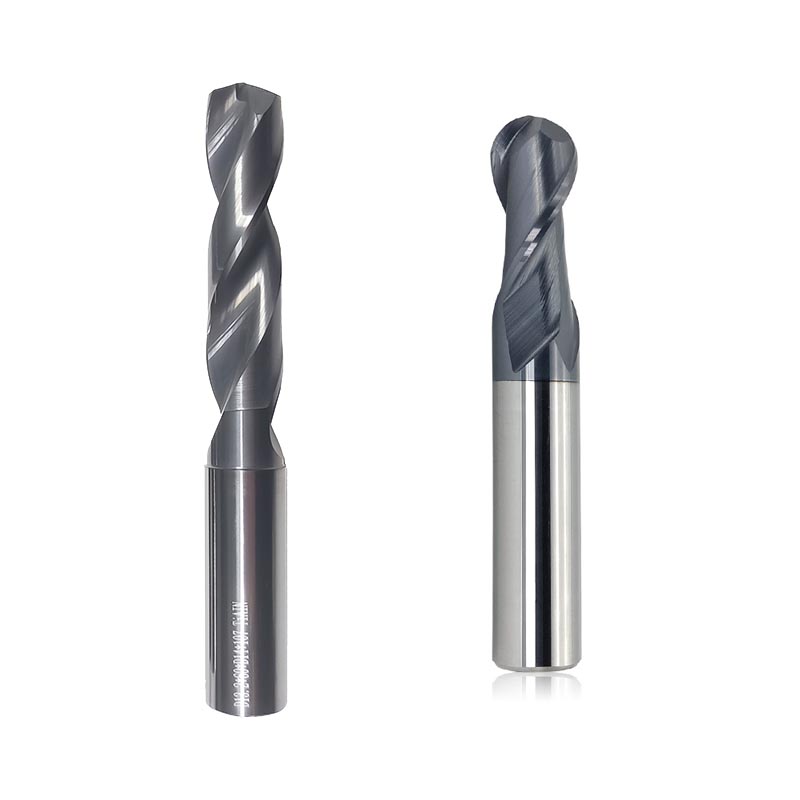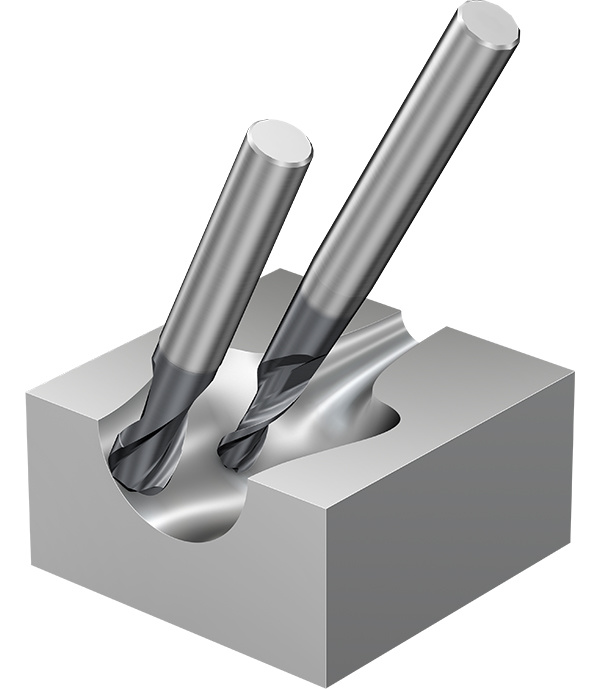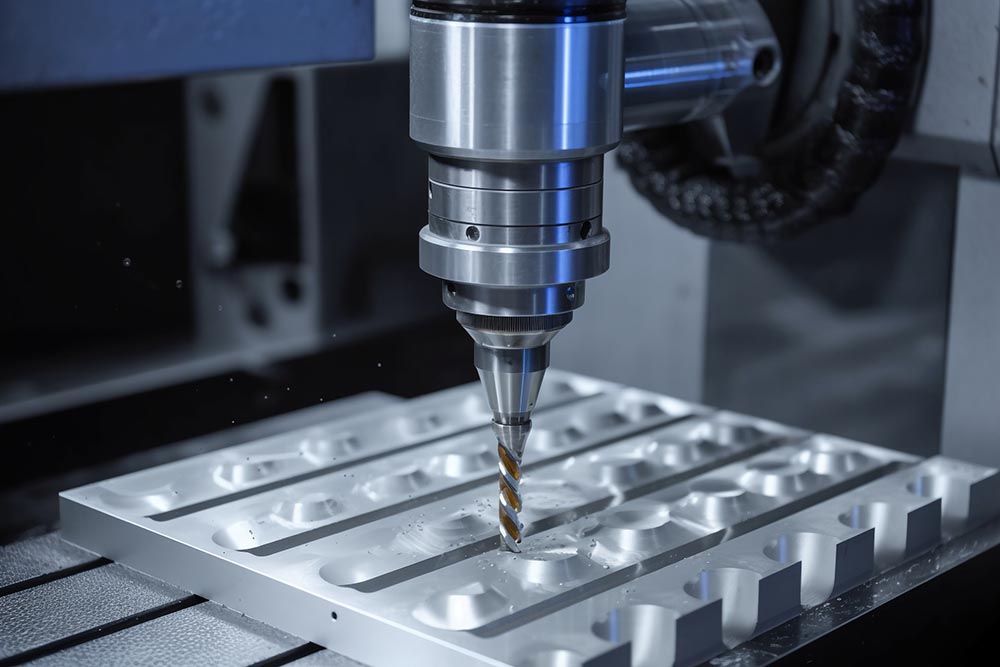When a Drill Bit Meets a Milling Cutter: Emergency Tool Solutions for Atypical Conditions
In feedback from overseas customers, we have noticed that small and medium-sized machining workshops often face the dilemma of "temporary tool shortages." This article explores the feasibility of substituting high-speed steel cobalt (HSS-E) and solid carbide tools in non-standard conditions based on their characteristics, providing overseas buyers with emergency machining references.
Innate Structural Differences (Differentiation Entry Point)
Hidden Geometric Properties of Cutting Edges
- Helix Angle Advantage: The drill bit’s helix angle (25°-35°) offers chip evacuation benefits. When substituting for a milling cutter in deep slot machining, it can help reduce aluminum adhesion. (Test case: A Φ6 solid carbide drill bit machining a 5052 aluminum keyway with compressed air assisting chip evacuation.)
- Axial Cutting Strength: The end relief angle (8°-12°) of a milling cutter enhances axial cutting capability, performing better than standard twist drills in thin sheet stack drilling. (Mexican customer feedback: A 4-flute flat-end milling cutter successfully drilled through a 10-layer stainless steel shim stack, each layer 0.5mm thick.)
Fatal Weakness of Neck Strength
Stress Concentration Risk: Compared to milling cutters of the same diameter, the transition fillet radius of drill shanks is 30%-50% smaller. This makes drills prone to stress concentration at the fillet when used for side milling. (Attached metallographic analysis: Microcrack initiation in an M35 drill under a lateral load of 300N.)
Boundary of Material Substitution (Technical Breakthrough Point)
Scenario-Based Substitution Matrix
| Workpiece Material | Recommended Substitution | Extreme Parameters | Failure Warning |
|---|
| 6061 Aluminum Alloy | Solid carbide drill as keyway milling cutter | ap ≤ 0.3D, Vc = 120m/min | Radial vibration >0.1mm when cutting width >2D |
| 304 Stainless Steel | 4-flute HSS-E milling cutter as spot drill | n ≤ 800rpm, peck depth 0.5mm | Stop immediately if chip buildup blocks flutes |
| POM Acetal | Double-angle drill as face milling cutter | fz = 0.05mm/z | Material softens above 120°C |
|
Compensation Strategies for Machining Parameters (Value-Added Point for Customers)
Speed Conversion Formula
Equivalent Milling Speed = Standard Drill Speed × (Drill Helix Angle / Milling Cutter Helix Angle)⁰·⁵
(Brazilian customer verification: When machining ABS with a Φ8 drill bit, using 1.2 times the normal speed improved surface roughness.)
Optimization of Tool Paths
It is recommended to use a "spiral progressive" approach instead of conventional reciprocating milling to reduce instantaneous lateral load on the drill edges. (Turkish auto parts factory case: Drill bit machining aluminum heat sink slots improved efficiency by 40%.)
The Feasibility Code of Tool Interchangeability
Shape Defines Function
- Drills Resemble Twists: Their spiral flutes excel at chip evacuation, making them suitable for deep slot machining in aluminum. (Like using a straw to drink bubble tea—the pearls don’t clog the straw.)
- Milling Cutters Resemble Knives: Their flat-end design allows for planar cutting, providing better stability than drills for temporary hole-making. (Like using a kitchen knife tip to poke small holes in thin wooden sheets.)
Material Hardness Comparison
| Material | Substitutability | Example |
|---|
| Aluminum/Plastic | ★★★★☆ | Using a drill to mill cooling slots in a phone case |
| Mild Steel | ★★☆☆☆ | A milling cutter drilling holes up to 3 times its diameter |
| Stainless Steel/Titanium Alloy | ★☆☆☆☆ | Not recommended for substitution |
|
Three Practical Scenarios for Tool Interchangeability
One Tool for Two Jobs: Saving Tool Change Time
- Drilling + Chamfering: Use a 140° pointed drill; after drilling, lightly press and rotate twice at the hole entrance to create a 0.5mm chamfer. (Like outlining with a pencil and refining with an eraser.)
- Slotting + Positioning: A flat-end milling cutter can first cut a shallow slot, then use its tip to mark an accurate positioning hole. (German customer test: Processing circuit board brackets saved 15% processing time.)
- Thin Sheet Machining: A two-flute milling cutter can be used as a drill for stainless steel sheets under 2mm thickness. (Key technique: Reduce speed by 30%, feed per revolution 0.02mm.)
Dangerous Operations to Avoid
- ⚠️ Side milling deep slots over 3 times the drill diameter with a standard drill. (Like trying to draw straight lines on a wall with an electric drill.)
- ⚠️ Using a milling cutter as a deep hole drill (over 5 times diameter). (Like making a sprinter run a marathon.)
Three Practical Substitution Techniques
Using a Drill as a Milling Cutter
- Applicable Scenario: Shallow slotting not exceeding 2 times the drill diameter
- Technique: Increase speed by 20%, reduce per-pass cutting depth by half (Like outlining carefully with a ballpoint pen.)
- Case Study: A Brazilian automotive supplier used a Φ5 drill to mill motorcycle bracket slots, saving 2 hours of tool waiting time.
Using a Milling Cutter as a Drill
- Applicable Scenario: Positioning holes on thin sheets
- Technique: First mark a shallow indentation, then gradually drill deeper (Like using a screwdriver tip to pierce an eggshell.)
- Warning: Stop immediately for thicknesses above 3mm.
One Tool for Dual Use
- Recommended Tool: Flat-bottom drill bits (capable of both drilling and chamfering)
- Test Data: Processing 100 parts saved 15 minutes of tool change time.
Three-Tier Risk Control Measures
- Primary Alert (Acoustic Monitoring): Issue an overload warning when machining noise exceeds 8kHz.
- Intermediate Alert (Chip Morphology): Stop immediately if deep blue curled chips appear in stainless steel machining.
- Ultimate Alert (Torque Fluctuation): Use a simple current sensor to monitor spindle load variations.
Conclusion
Tool substitution is like using a Swiss Army knife in emergencies—it works temporarily but is not a long-term solution. We provide both high-quality specialized tools and safe emergency machining techniques, ensuring your workshop maintains productivity at all times.





 We like to do design according to all the customers' requirements, or offer them our new designs. With strong OEM/ODM capabilities, we can fill your sourcing demands.
We like to do design according to all the customers' requirements, or offer them our new designs. With strong OEM/ODM capabilities, we can fill your sourcing demands.